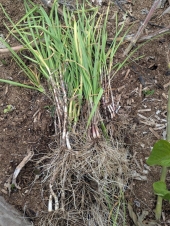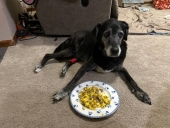




larry kidd wrote:It got down to about 20f last night and I never insulated or heated the batteries. Lost power about 2:30am took till about noon to get the cells warmed up to about 35f or 2c and got power back online. Spent the better part of the day after that wrapping the cells with heat tape for pipes and put insulation under and over , still need to go back and insulate the sides. Used 30 feet of heat tape with a 90w draw. It has it's own thermostat on at 35 off at 50 if I remember correctly.

John F Dean wrote:Without crossing too far into another post, I had a pig missing yesterday. I found it after dark in the woods. It had given birth under an old lean to. I was in no position to deal with it energy wise. I made sure it had lots of straw and hoped for the best. As dawn was breaking I headed out to it with a flashlight in one hand and coffee in the other. When I got to the shelter, I had trouble figuring out what I was looking at. Momma was there and out shelter pup was laying beside her. Then the pup stood up ….there were all the babies …alive. The pup had used her body to keep them warm.
It took me a couple of hours, but I did the family moved to to a warm stall with a heat lamp in the barn.

Eric Hanson wrote:....... My neighbor gently teased me when he mentions that I spent $1500 all-in. In return my response is that it was worth every penny, and If I had known how useful it is, I would have tackled this long ago.
Ali Green wrote:
Caesar Smith wrote:I got a message like OP yesterday. Apparently I’m gonna lose access to my Permies account just because of Hotmail? Having to set up a new email account is rather inconvenient. Isn’t there anything else that can be done about the situation?
I got the same message and added the permies email address to my contact list in the hope that it goes through again. I don't know how I'll know if it has worked or not though...

